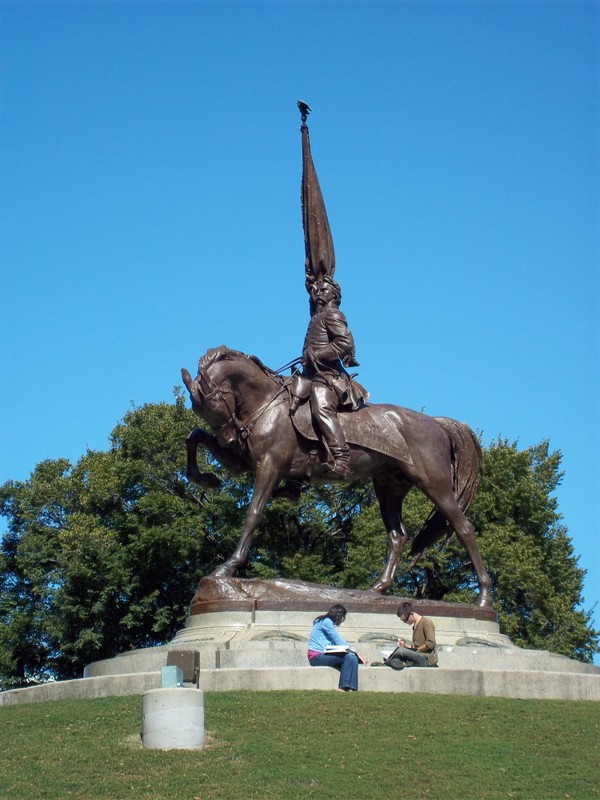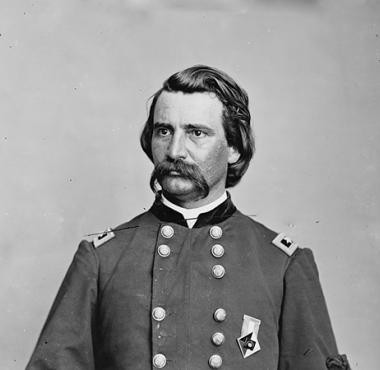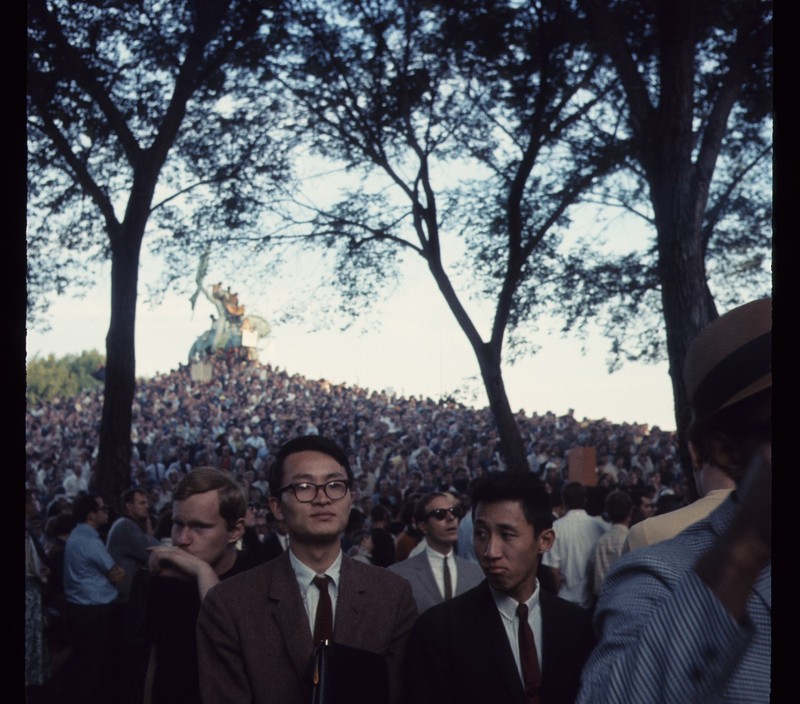John Alexander Logan Monument
Introduction
Text-to-speech Audio
Images
John Alexander Logan Monument in Chicago's Grant Park

John Alexander Logan (1826-1886)

The monument was the site of protests during the 1968 Democratic National Convention

Backstory and Context
Text-to-speech Audio
John Alexander Logan was born in what is now the town of Murphysboro in Jackson County, Illinois on February 9, 1826. His father was a physician and farmer who also made a successful foray into politics, occupying a seat in the Illinois state legislature for almost a decade. After attending Shiloh College, Logan served in the Mexican War as a second lieutenant, but did not see combat. He then studied law at the University of Louisville, graduating in 1851, and was admitted to the bar the following year. Between 1853 and 1857, Logan served in the Illinois state legislature and as prosecuting attorney for the Third Judicial District of Illinois. In 1858, running as a Democrat, he won a seat in the U.S. House of Representatives. Two years later, Logan won reelection.
Despite being a proslavery Democrat who strongly supported fugitive slave laws and vehemently opposed abolitionism, Logan possessed a deep attachment to the Union and refused to stand idly by as some southerners attempted to dissolve it. In the summer of 1861, he accompanied a Michigan regiment to northern Virginia and participated in the First Battle of Bull Run. After the engagement, Logan resigned his seat in Congress and returned to Illinois. There, he raised the Thirty-First Illinois Infantry and became its colonel. Affectionately known to his men as “Black Jack” because of his dark hair and complexion, Logan led the Illinois regiment during the Battles of Belmont, Fort Henry, and Fort Donelson. During the last engagement, he was severely wounded. While recovering from his injury, Logan received a promotion to the rank of brigadier general. When he returned to the front he did so as a bridge commander in VII Corps of the Army of the Tennessee. By March 1863, Logan had received a promotion to the rank of major general and was given command of a division. With his division, he participated in the Vicksburg campaign. That October, Logan took command of XV Corps, which he led during the Atlanta campaign in the spring and summer of 1864. In the fall of 1864, he returned to his home state to campaign for President Lincoln’s reelection bid. That December, Logan resumed command of XV Corps, and led it for the remainder of the war.
After the war, Logan reentered the political arena. Running as a Republican, he won a seat in the U.S. House of Representatives in 1866. Logan served in the House until 1871, when the Illinois legislature selected him to be one of the state’s two U.S. senators. In 1876, the state legislature did not reelect him. Three years later, however, Logan secured another term in the Senate, serving until his death on December 26, 1886. Two years prior, in 1884, he was the Republican nominee for vice president of the United States. Logan’s running mate, James Blaine, lost the presidential election that year to the Democratic nominee and governor of New York, Grover Cleveland.
In addition to resuming his career in politics after the war, Logan became an unflinching advocate for Union war veterans. In 1866, he helped establish the Grand Army of the Republic. While serving as the organization’s first commander in chief, Logan issued General Order No. 11 in 1868, which designated May 30 as a day to decorate the graves of Union soldiers. Known as Decoration Day, it was renamed Memorial Day in 1882. Memorial Day became an official federal holiday in 1971 and observance was moved to the last Monday in May.
Following Logan’s death in 1886, the Illinois state legislature allocated funds for the erection of a monument in Chicago in his honor. Designed by sculptors Augustus Saint-Gaudens and Alexander Phimister Proctor, the monument consists of a bronze equestrian statue of the Civil War general on a granite pedestal. The sculpture depicts Logan sitting confidently upright on his steed, gazing into the distance. His left hand tightly clutches the reigns while his right holds high a flag. Dedicated in 1897 in what is now Grant Park, the monument sits atop a grassy hill containing an empty subterranean burial vault, which was intended to house the remains of both Logan and his wife.
Sources
"John A. Logan." American Battlefield Trust. Web. 8 March 2021 <https://www.battlefields.org/learn/biographies/john-logan>.
"John Alexander Logan Monument." Chicago Park District. City of Chicago. Web. 8 March 2021 <https://www.chicagoparkdistrict.com/parks-facilities/john-alexander-logan-monument>.
"Logan, John Alexander." Biographical Directory of the United States Congress, 1774-Present. United States Congress. Web. 8 March 2021 <https://bioguideretro.congress.gov/Home/MemberDetails?memIndex=l000403>.
Wright, John D. The Routledge Encyclopedia of Civil War Era Biographies. New York, Taylor & Francis, 2013.
https://en.wikipedia.org/wiki/General_John_Logan_Memorial
https://www.battlefields.org/learn/biographies/john-logan
https://en.wikipedia.org/wiki/General_John_Logan_Memorial
